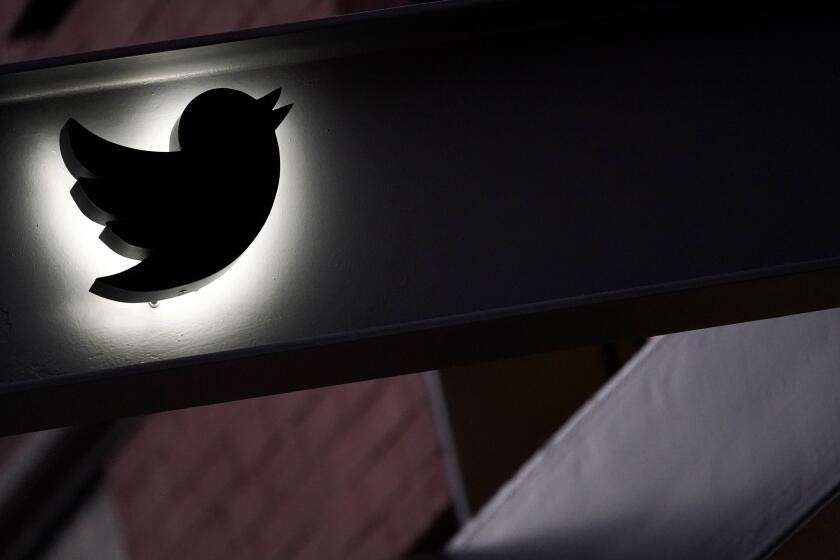Twitter risks fraying as engineers exit over Musk upheaval

Elon Muskâs managerial bomb-throwing at Twitter has so thinned the ranks of software engineers who keep the worldâs de-facto public square up and running that industry insiders and programmers who resigned or were fired this week agree: Twitter may soon fray so badly it could actually crash.
Musk ended a very public argument with nearly two dozen coders over his retooling of the microblogging platform earlier this week by ordering them fired. Hundreds of engineers and other workers then quit after he demanded they commit to âextremely hardcoreâ work by Thursday evening or resign with severance pay.
The newest departures mean the platform is losing workers just at it gears up for the 2022 FIFA World Cup, which opens Sunday. Itâs one of Twitterâs busiest events, when tweet surges heavily stress its systems.
âIt does look like heâs going to blow up Twitter,â said Robert Graham, a veteran cybersecurity entrepreneur. âI canât see how the lights wonât go out at any momentâ â although many recently departed Twitter employees predicted a more gradual demise.
Hundreds of employees signaled they were leaving ahead of Thursdayâs deadline, posting farewell messages, a salute emoji or other familiar symbols on the companyâs internal Slack messaging board, according to employees who still have access. Dozens also announced their departures publicly on Twitter.
Earlier in the week, some got so angry at Muskâs perceived recklessness that they took to Twitter to insult the chief executive of Tesla and SpaceX. âKiss my ass, Elon,â one engineer said, adding lipstick marks. She had been fired.
Twitter leadership sent an unsigned email after Thursdayâs deadline saying Twitterâs offices would be closed and employee badge access disabled until Monday. No reason was given, according to two employees who got the email â one who took the severance, one who was still on payroll. They spoke on condition of anonymity, fearing retribution.
A trusted phalanx of Tesla coders at his side as he ransacked a formerly convivial workspace, Musk didnât appear bothered.
âThe best people are staying, so Iâm not super worried,â he tweeted Thursday night. But it soon became clear some crucial programming teams had been thoroughly gutted.
Indicating how strapped he is for programmers, Musk sent all-hands emails Friday summoning âanyone who actually writes softwareâ to his command perch on Twitterâs 10th floor at 2 p.m. â asking that they fly into San Francisco if not local, said the employee who quit Thursday but was still receiving company emails.
After taking over Twitter less than three weeks ago, Musk booted half of the companyâs full-time staff of 7,500 and an untold number of contractors responsible for content moderation and other crucial functions. Then came this weekâs ultimatum.
Three engineers who left this week described for the Associated Press why they expect considerable unpleasantness for Twitterâs more than 230 million users now that well over two-thirds of Twitterâs pre-Musk core services engineers are apparently gone. Although they donât anticipate near-term collapse, Twitter could get very rough at the edges â especially if Musk makes major changes without much off-platform testing.
Twitterâs biggest problem used to be the human nature of its own users. Elon Musk has changed that.
Signs of fraying were evident before Thursdayâs mass exit. People reported seeing more spam and scams on their feeds and in their direct messages. Engineers reported dropped tweets. People got strange error messages.
Still, nothing crucial has broken. Yet.
âThereâs a betting pool for when that happens,â said one of the engineers, all of whom spoke on condition of anonymity for fear of retaliation from Musk that could hurt their careers and finances.
Another said that if Twitter has been shutting servers and âhigh volume suddenly comes in, it might start crashing.â
âWorld Cup is the biggest event for Twitter. Thatâs the first thing you learn when you onboard at Twitter,â he said.
With the earlier layoffs of curation employees, Twitterâs trending pages were already suffering. The engineering fireworks began Tuesday when Musk announced on Twitter that he had begun shutting down âmicroservicesâ he considered unnecessary âbloatware.â
âLess than 20% are actually needed for Twitter to work!â he tweeted.
That drew objections from engineers who told Musk he had no idea what he was talking about.
âMicroservices are how most modern large web services organize their code to allow software engineers to work quickly and efficiently,â said Gergely Orosz, author of the Pragmatic Engineer blog and a former Uber programmer. There are scores of such services and each manages a different feature. Instead of testing the removal of microservices in a simulated real-world environment, Muskâs team has apparently been updating Twitter live on everyoneâs computers.
And indeed, one microservice briefly broke â the one people use to verify their identity to Twitter via SMS message when they log in. Itâs called two-factor authentication.
âYou have hit the limit for SMS codes. Try again in 24 hours,â Twitter advised when a reporter tried to download their microblogging history archive. Luckily, the email verification alternative worked.
One of the newly separated Twitter engineers, who had worked in core services, told the AP that engineering team clusters were down from about 15 people pre-Musk â not including team leaders, who were all laid off â to three or four before Thursdayâs resignations.
Then more institutional knowledge that canât be replaced overnight walked out the door.
âEverything could break,â the programmer said.
It takes six months to train someone to work an on-call rotation for some services, the engineers said. Such rotations require programmers to be available at all hours. But if the person on call is unfamiliar with the code base, failures could cascade as they frantically plow through reference manuals.
âIf I stayed I would have been on-call constantly with little support for an indeterminate amount of time on several additional complex systems I had no experience in,â tweeted Peter Clowes, an engineer who took the severance.
âRunning even relatively boring systems takes people who know where to go when something breaks,â said Blaine Cook, Twitterâs founding engineer, who left in 2008. Itâs dangerous to drastically reduce a programming workforce to a skeleton crew without first bulletproofing the code, he said.
âItâs like saying, âThese firefighters arenât doing anything. So, weâll just fire them all.ââ
The engineers also worry that Musk will shut down tools involved in content moderation and removal of illicit material that people upload to Twitter â or that there simply wonât be enough people on staff to run them properly.
Another concern is hackers. When theyâve breached the system in the past, damage control depends on detecting them quickly and kicking them out.
Itâs not clear how Muskâs purge at Twitter has affected its cybersecurity team, which suffered a major public relations black eye in August when the highly respected security chief fired by the company earlier this year, Peiter Zatko, filed a whistleblower complaint claiming the platform was a cybersecurity shambles.
âSo much of the security infrastructure of a large organization like Twitter is in peopleâs heads,â said Graham, the cybersecurity veteran. âAnd when theyâre gone, you know, it all goes with them.â
AP technology writer Matt OâBrien contributed to this report.
More to Read
Inside the business of entertainment
The Wide Shot brings you news, analysis and insights on everything from streaming wars to production â and what it all means for the future.
You may occasionally receive promotional content from the Los Angeles Times.











